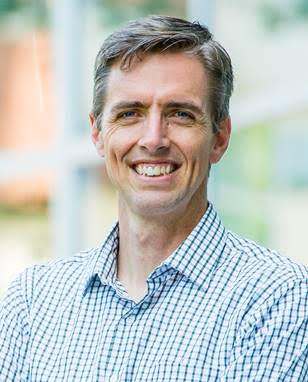Keynote Presentation
 Erik Foley
Erik FoleyDirector of Sustainability
Smeal College of Business, Pennsylvania State University
"The Business Case for Sustainability "
Wednesday, March 28
1:15 pm
"The Business Case for Sustainability "
Wednesday, March 28
1:15 pm
The sustainability movement has taken a strong hold across the world, requiring that businesses of all sizes and in all industries consider, in addition to financial performance, their environmental and social performance. The ground is shifting under our feet. There have been major shifts:
| The Focus was: | And now, the Focus is: |
Green |
High performance |
Building operators |
Business partners who support the organization and sustainability measures |
Hard skills |
Hard and soft skills to implement operational initiatives across the enterprise |
Cost |
Carbon / Net Impact / Life Cycle Cost |
That means there arises now the demand for responsible, sustainable performance: more efficient, more people-friendly, and more ecologically innovative. But smart sustainability, as attendees will learn, is more like a thermal imaging camera. It’s a new way of looking at facilities that reveals opportunities not seen before. It’s not just about the environment; it’s about a better way of doing things.
Attendees will get new insights into the “business case for sustainability” and how it connects to their career and responsibilities in facilities management, as well as practical tools and advice they can use.

Afternoon Program
Wednesday, March 28
2:45 pm - 3:50 pm
SESSION 1
"Security by Design: Integrating Security Measures into Your Building Project"
"Security by Design: Integrating Security Measures into Your Building Project"
Presenters: Mark A. Bodenschatz, Penn State Facilities Engineering Institute and Scotty Eble, Chief Physical Security Officer, Pennsylvania State University
Recent terror events have changed the way we think about building security. Understanding vulnerabilities, threats, and trends can improve the safety and security of every facility we build. This presentation reviews recent major events and shows how design can help or hurt the final outcome of such an event. A case is made for security directors to be included in the design process, in order to integrate cost-effective, and in many cases invisible, solutions that better protect building occupants. Lastly, the presentation will look at, as a positive case study, the implementation of protective measures integrated in the design of the new Little Caesar’s Arena in Detroit.
SESSION 2
"Earth and Turf"
"Earth and Turf"
Presenters: Kimberly LaBrake, and James Lynch, D'Huy Engineering with Andrew McNitt, Director of the Sports Surface Research Center, Pennsylvania State University
Is your college or university contemplating synthetic turf? This presentation will be an informative session on the steps to successfully designing, permitting, procuring, and constructing athletic and recreational field projects. Highlighted will be the new synthetic turf field project at Penn State’s Berks Campus, as well as a multi-sport facilities project at Penn State’s Worthington Scranton campus, and a feasibility study and cost estimate for an athletic facilities complex at Penn State’s Hazleton campus.
* This presentation has been certified for, or is pending, an AIA continuing education credit.
SESSION 3
"RACP: Who, What, When, Where, Why & How?"
"RACP: Who, What, When, Where, Why & How?"
The Redevelopment Assistance Capital Program (RACP) is a Commonwealth grant program, administered by the Office of the Budget, for the acquisition and construction of economic, cultural, civic, recreational, and historical improvement projects. With a recent resurgence in activity, RACP can be used as a funding source by both public and private higher education institutions. This session will cover:
- How to determine the applicability of RACP for public and private higher education institutions;
- How an A/E/C firm can assist their clients in submitting for, acquiring, and utilizing RACP funds;
- The process for getting an RACP grant authorized and appropriated;
- How to use the funds wisely to ensure both compliance and timely reimbursement;
- And, how to avoid pitfalls that will cause aggravation and unnecessary expense.


